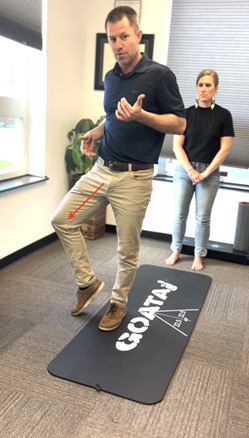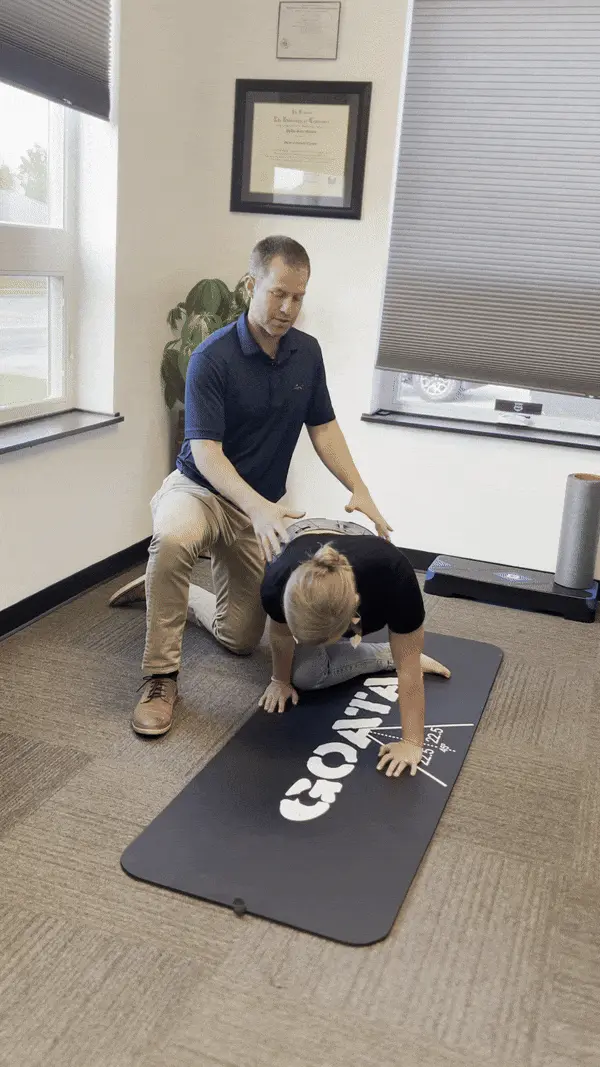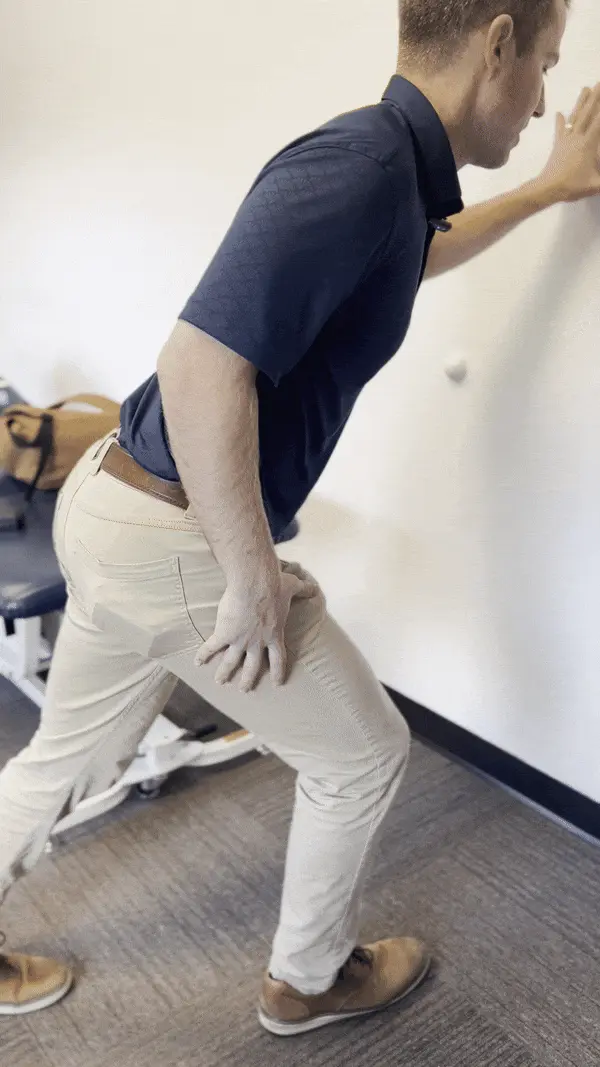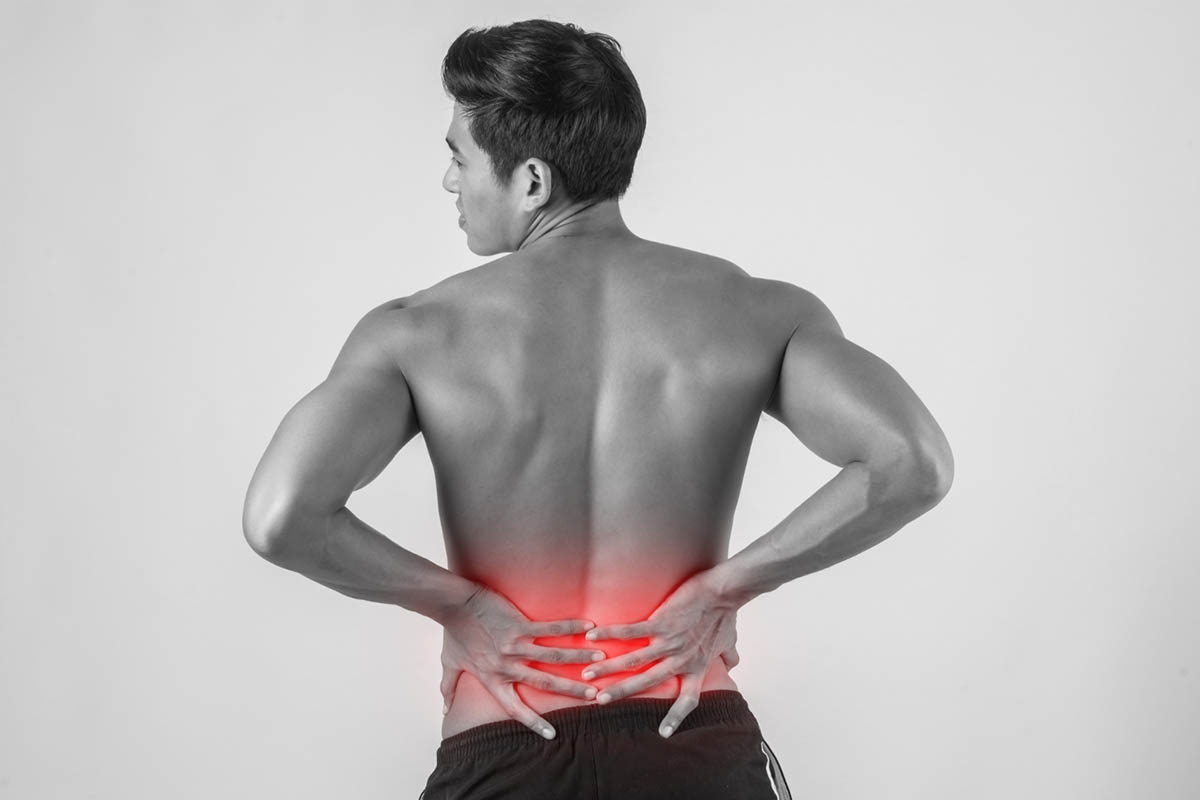Welcome in today! Phillip here on the blog again today, and I’m going to be doing an assessment today of my wife, Claire, our willing patient!
Before we get started, first, we’re going to talk about the physical therapy approach we’ll be using to analyze and treat Claire’s joint pain. The approach I’m using is named G.O.A.T.A., which stands for Greatest Of All Time Actions/Athletes. This specialized approach integrates advanced techniques in rehabilitation, biomechanics, and sports science to mimic the movements of high performance athletes. Considering that these athletes must move well in order to stay well and excel in their performance, this approach emphasizes a comprehensive assessment of injuries and movement to help optimize how the human body moves in order to support healing and prevent further injury. The focus is not only on recovering from injuries but also on optimizing movement potential through personalized treatment plans that incorporate cutting-edge therapies and technologies. G.O.A.T.A. combines rehabilitation with movement enhancement principles, supporting patients to return to a pain-free lifestyle.

So, today let’s analyze Claire’s pain. Claire has had back and hip pain on and off probably for a year or so after doing deadlifts. In looking at her pain, one of the things that I look at is her gait and her walking pattern to see where some things are going wrong so to speak. One of the things with Claire is when she’s walking that she doesn’t rotate her hip very well.

So, a lot of times her knee is going out instead of rotating in when she pushing off her weightbearing leg, and that can cause a lot of hip problems because her hips should be rotating in while it’s going the other way. That then leads to excessive stress on the joint and causes wear and tear of the hip joint. You might be asking, then, what do I do if this is me?
Well, there are two exercises that you can do to work on this. The first one is called a corner.

The biggest goal we’re trying to achieve in working on Claire’s hip pain is trying to re-teach a movement behavior. We’re trying to teach her to ‘corner’ when she walks instead of going out with her leg. Currently, her knee is flying out when it comes through, but her knee should be rotating in along with her entire trunk. You can see the cornering behavior when a golfer or baseball player rotates their body to hit the ball. Their back leg is cornering and it provides all the power to hit the ball as far as they do.
Here’s what a corner looks like. You get on your hands and knees and then you twist this hip inward so that she is working on internal rotation of the hip. If you ever try this, you’re going to feel a really deep stretch in the hip. Not only are we trying to stretch the hip out, we’re trying to work on a behavior that we’re trying to change in the way she’s walking. But first, we’re breaking it down here on the ground.

A second exercise you can work on is up against the wall. In the photo below, you’re going to put all the weight on your right leg, just like we would when we walk. Then you are going to spin and rotate your back leg as you bring your opposite leg through. In this case, the back heel is going away (not in), and the whole body is rotating as one unit to the left. The purpose of this exercise is that it is going to teach people to rotate as one.

So, let’s get back to Claire’s pain and put all this all together. My theory, as a PT, is that Claire’s poor cornering behavior has led to excessive stress on the hip joint, and now, her hip can’t tolerate the stress of deadlifts. Deadlifts are an exercise that needs to be performed with excellent form because it puts significant stress on the body and requires optimal movement of the ankle, knee, and hip. The goal of Claire’s rehabilitation program would be to correct her cornering behavior and gradually work on loading the hip joint through exercise until she is able to return to deadlifts with no pain and proper form.

